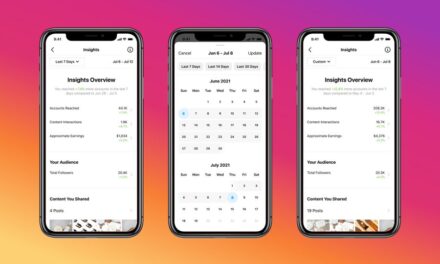Repost from: https://www.marketingtechnews.net/news/2018/oct/29/why-personalised-ux-new-marketing-mindset/
The days when the one-directional, sweeping message of the billboard ruled are well in the past. Now, as ad blocking continues to grow in popularity, marketers are faced with the constant pressure of trying to come up with innovative ways of capturing people’s attention without being intrusive.
As we enter a new era where advertising will no longer be invasive or off-target, it looks likely that we are finally reaching the advertising Nirvana of creating a hyper-personalised UX that consumers may actually enjoy!
It already feels as though e-marketing’s brief existence is over as we shift towards AI technology that is practically able to read our minds, well, our faces in fact!
Facial recognition is being rolled out across different industries from security scanners at the airport to allow e-passport holders to rapidly clear customs, to product recommendations based on mood detection derived from a person’s facial expressions.
Beyond entertaining
So let’s take a closer look at how facial recognition will enhance the marketer’s toolkit. As this technology continues to proliferate through consumer landscapes, it adds more proof that it is no longer seen as threatening, but rather as a means of improving safety and convenience. Many of us have already been enjoying its benefits from Facebook’s use of a face recognition algorithm to guess who is in the pictures we post to airlines such as Delta introducing facial recognition to speed up self-service bag drops.
And, naturally, marketers have been itching to harness this power for better advertising.
The market for facial recognition is expected to grow from $3.35 billion in 2016 to $7.76 billion by 2022, and at least part of that growth will be due to new advertising initiatives involving the technology. Little wonder really as it offers marketers unmatched analytics and insights.
Being able to accurately read a person’s mood will mean being able to tailor a message or even a campaign specifically to them, and there is no doubt that working with a more engaged user who has opted in, will mean higher conversion and increased customer acquisition rates.
Naturally hyper-targeted
We are rapidly approaching a time when every advertisement we see, whether we know it or not, will be 100 percent targeted at us and our interests. And it won’t take long for us to accept this without query as advertising becomes a positive experience.
Retargeting will really come into its own as personalised offers will be tailored to people who specifically showed an interest in a given product. Just imagine inspecting a food processor in a superstore which uses facial recognition tools to monitor consumer behaviour. If you don’t purchase the item you may receive an online ad of this same item with a discount, or possibly a message offering more detailed information around the product.
This kind of hyper-targeting requires marketers to start thinking about how to engage their audience in a more immersive and meaningful way. It is not enough to be using the latest, splashiest technology: It’s about taking the time to craft a campaign that services all consumers’ needs.
Next generation UX
Which is why, before we get too excited at the prospect of using cool new technology such as facial recognition, we need to ensure we don’t turn it into a “clever trick”.
The way we use it must significantly shape the way marketers enhance a new generation of UX.
This is not just about being innovative, rather it is about using innovation in a strategic way to achieve the right results. This is a once-in-a-generation opportunity for marketers to prove to consumers that they have shifted away from their former invasive style and truly offer an enhanced UX.
Customised UX must align with consumers interests, emotions, and preferences if brands are to engage with willing customers.
Conclusion
As the continued popularity of lenses and filters on social media shows, there is definitely an appetite for advertising content that puts the user in the front seat.
Quite frankly there is nothing more engaging than having the customer play a central role in the advertisement and marketers are now poised to deliver this as they seamlessly mesh personalisation with next-gen campaigns that are rapid, interactive and truly engaging.















